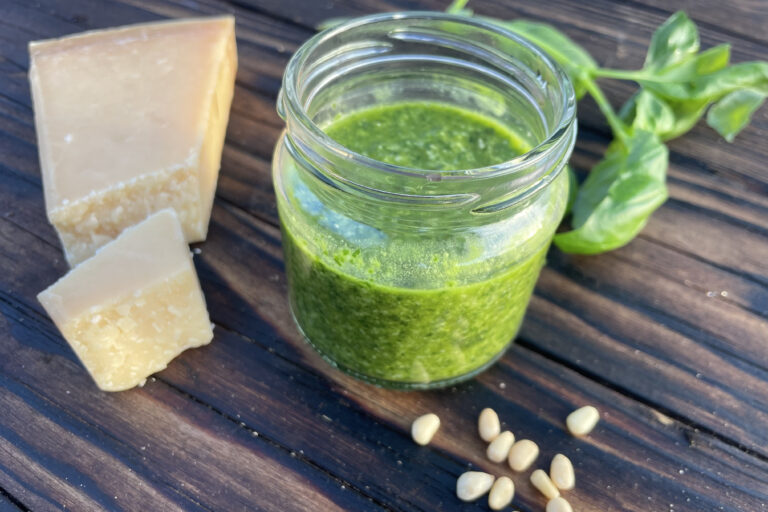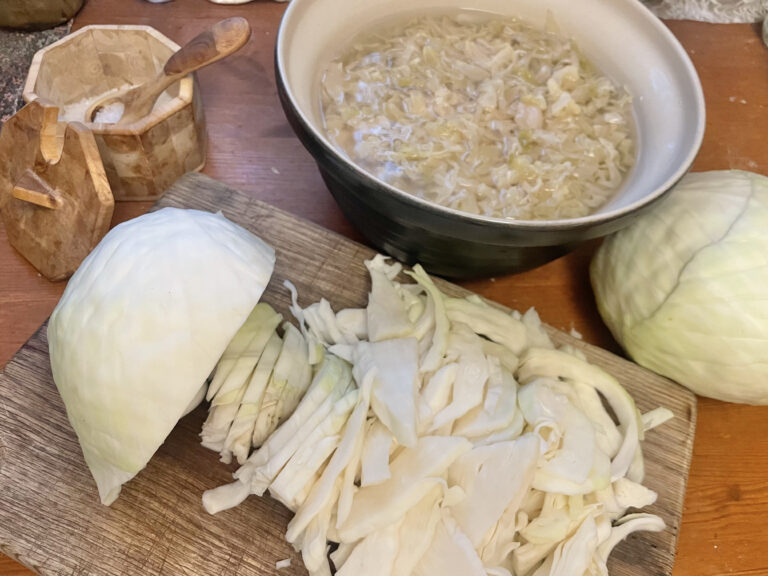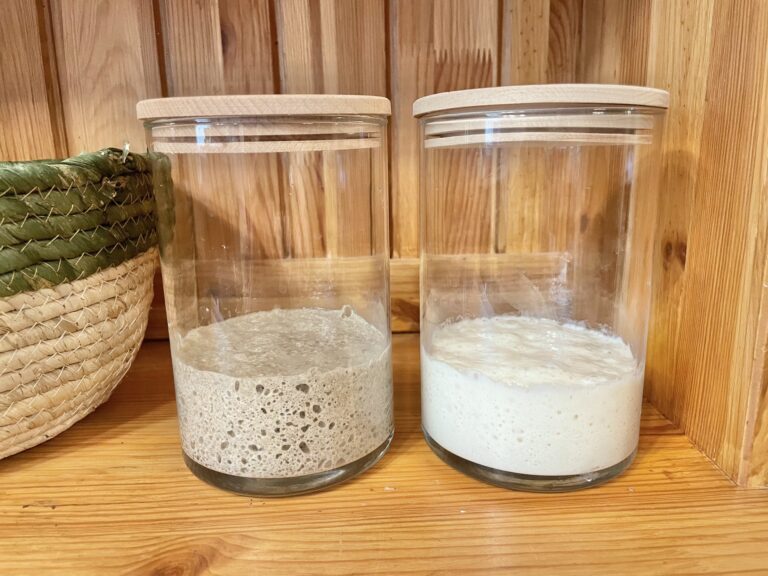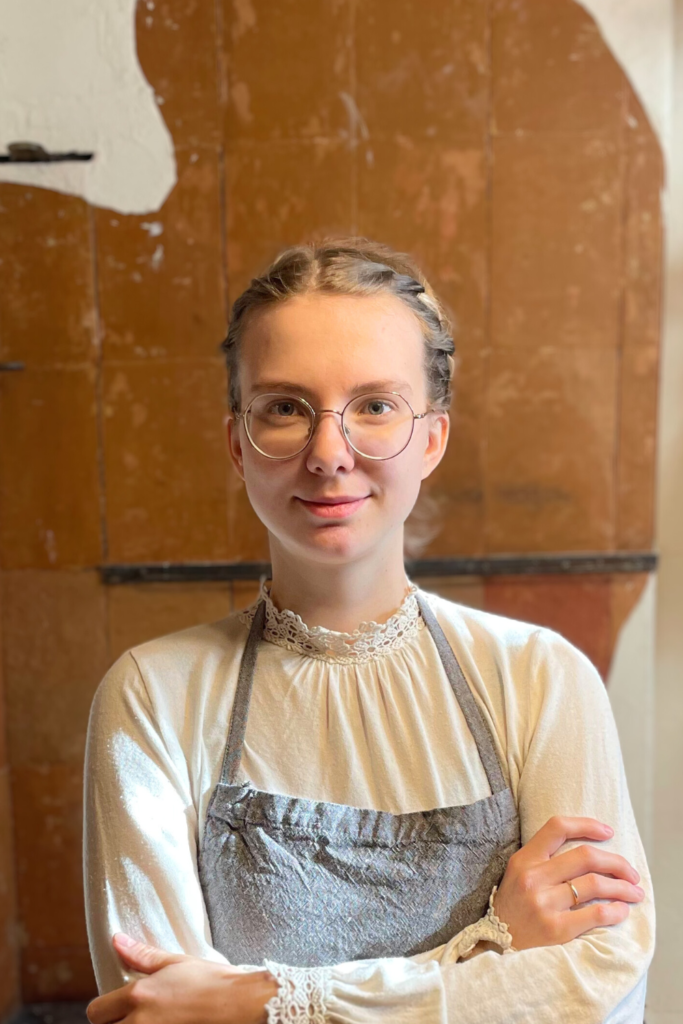Rhubarb syrup has won the hearts of our entire family and is one of our favorite summer drinks. This simple rhubarb syrup recipe is a wonderful way to use tart rhubarb and turn it into sweet syrup. During the rhubarb season, I always make a large batch of syrup from fresh rhubarb and preserve it in jars. Later, this delicious syrup can be used to make rhubarb juice, and sparkling rhubarb lemonade, and create stronger cocktails. To obtain delicious rhubarb syrup, you don’t need to exert much effort or possess special juice extraction equipment. I simply boil rhubarb syrup in a regular cooking pot, and the resulting concentrate is quite rich. Despite this, you have to add water since there isn’t much liquid in the rhubarb itself.

Before starting, come and follow me on Instagram, Facebook, and Pinterest!
Benefits of a Rhubarb
As a herb, rhubarb may not be widely known, but it still contains several beneficial vitamins that have a healing effect on the body. It is particularly rich in vitamin K and vitamin A.
- Rhubarb acts as a natural laxative.
- It improves memory, stimulates brain activity, and aids in the fight against Alzheimer’s disease.
- It lowers bad cholesterol levels.
- It inhibits the development of cancer.
Rhubarb Leaves
It is often said that rhubarb leaves are poisonous—however, some people even make soup out of rhubarb leaves. So, what does this mean? Can you eat them or not? To put it simply: rhubarb leaves are not edible! They are not necessary to consume, as they don’t provide any particularly useful benefits. The problem lies in the concentration of oxalic acid in the leaves—rhubarb leaves contain an extremely high amount of oxalic acid, so even with minimal consumption, it can have an impact on the body. Oxalic acid can also be found for example in rhubarb stalks, spinach, and sorrel, but in significantly smaller quantities. Therefore, there is no need to worry about the negative effects of oxalic acid when consumed in moderate amounts. However, it is worth noting that the concentration of oxalic acid in plants increases during the summer, so the earlier you harvest rhubarb, the better. Oxalic acid does not break down when boiled.

The harmful effects of oxalic acid are multifaceted. For example, oxalic acid impedes the absorption of calcium, copper, and iron. In addition, it promotes the formation of kidney stones. Excessive intake of oxalic acid significantly lowers the pH level of the body, which can lead to severe and even life-threatening consequences.
Due to all the aforementioned reasons, rhubarb leaves should not be consumed as food. Despite the presence of oxalic acid in rhubarb stalks, the amount is so small that the delicious taste and beneficial properties of rhubarb outweigh any negative effects of oxalic acid.
How to Harvest Rhubarb
There is no ambiguity here: rhubarb stalks should be pulled out, not cut. Cutting leaves the stalk base, which can rot and destroy the plant. Besides, in my opinion, pulling the stalks out is much easier than using a knife.
What Do You Need to Make Rhubarb Syrup
Rhubarb stalks
Sugar
Water
A cooking pot – the bigger, the better, as you can cook a larger amount of rhubarb at once.
A fine mesh strainer – You can also use a double layer of cheesecloth or other clean fabric.
A spoon or a scoop
Jars for storing the syrup
How to Make Rhubarb Syrup
- Cut the rhubarb into pieces that will fit in the pot. Depending on the size of the pot, I cut them into 10-15cm lengths. There’s no point in cutting them smaller because the rhubarb will completely disintegrate during cooking.
- Fill the pot with rhubarb and add water, just enough to cover the rhubarb. If possible, add water using a measuring cup, so you can keep track of the amount of liquid in the pot and it will be easier to add sugar. Keep in mind that sugar significantly increases the liquid level, so don’t fill the pot to the brim.
- Add sugar.
- Bring the entire pot to a boil and simmer for approximately 20 minutes, or until sugar dissolves and the rhubarb has completely softened.

- Strain the finished syrup from the rhubarb pulp and pour it into storage containers such as glass bottles and mason jars.
- Don’t throw away the leftover rhubarb pulp. You can make rhubarb sauce, store it in jars, and use it later, for example, in pies or pastries.
How to Use Rhubarb Syrup
There are numerous ways to use rhubarb syrup. For example, you can make homemade soda. The concentrate made following this guide is approximately 1:4 – 1 part syrup and 4 parts water. If you don’t like fizzy drinks, you can add regular water to the syrup instead of soda water, creating a refreshing rhubarb juice. Of course, you can also use it to create various alcoholic and non-alcoholic cocktails. Here are a small bunch of rhubarb cocktail recipes.
However, rhubarb syrup is not limited to drinks. You can use it to make rhubarb muffins or drizzle it over vanilla ice cream or French toast, for instance.

Ideas and Tips
- Adding mint gives a unique flavor to rhubarb syrup. I recommend adding mint to hot water after boiling the rhubarb. For the best nutritional benefits, I don’t prefer boiling the mint along with the rhubarb.
- Always cook rhubarb with its skin. The skin only adds flavor and nutritional value, and it also saves you a lot of time compared to peeling. You won’t taste the rhubarb skin when consuming it.


How to Make Homemade Rhubarb Syrup (for Cocktails)
You can turn the incredibly easy rhubarb syrup into a refreshing juice, sparkling lemonade, or a cocktail!
Ingredients
- Rhubarb stalks
- Sugar (approximately 1kg to 5l of water)
- A cooking pot - the bigger, the better, as you can cook a larger amount of rhubarb at once.
- Strainer - needed for draining the liquid. You can also use clean fabric like cheesecloth.
- A spoon or a scoop
- Jars for storing the syrup
- Water (just enough to cover the rhubarbs)
Instructions
- Cut the rhubarb into pieces that will fit in the pot. Depending on the size of the pot, I cut them into 10-15cm lengths. There's no point in cutting them smaller because the rhubarb will completely disintegrate during cooking.
- Fill the pot with rhubarb and add water, just enough to cover the rhubarb. If possible, add water using a measuring cup, so you can keep track of the amount of liquid in the pot and it will be easier to add sugar. Keep in mind that sugar significantly increases the liquid level, so don't fill the pot to the brim.
- Add sugar.
- Bring the entire pot to a boil and simmer for approximately 20 minutes, or until the rhubarb has completely softened.
- Strain the liquid from the rhubarb pulp and pour it into storage containers.
- Don't throw away the leftover rhubarb pulp. It can also be stored in jars and used later, for example, in baking cakes.
- The concentrate obtained from cooking rhubarb syrup is approximately 1:4 - 1 part syrup and 4 parts water.
Nutrition Information:
Yield: 1 Serving Size: 1Amount Per Serving: Calories: 258Total Fat: 0gSaturated Fat: 0gTrans Fat: 0gUnsaturated Fat: 0gCholesterol: 0mgSodium: 64mgCarbohydrates: 67gFiber: 2gSugar: 40gProtein: 1g





